F-Stop Gear’s Ajna Backpack
F-Stop Gear’s Ajna is a reasonably well built hiking style pack designed for photographers. Its biggest selling point is F-Stop Gear’s innovative modular camera mounting system called Internal Camera Units. However, the pack isn’t perfect and there are several key areas where the Ajna could be improved. Especially when it comes to weather resistance.
A Hiking Pack for Photographers
When I was getting ready for my 2016 Southwest road trip, I needed a better pack for carrying my gear all day on and off trails. Aside from the long term comfort situation, I had a couple of other wants that my Airport Commuter didn’t address. These included:
- A color other than black, preferably a light earthy color. My experience in the Florida sun has taught me that a black bag can roast your gear even when the air temperature is otherwise comfortable.
- A fully customizable suspension system. The Airport Commuter has great padded straps. However, the strap and belt positions can’t really be adjusted and that makes it hard for me to wear all day. Especially when it’s full and heavy.
- Support for a hydration bladder. Staying hydrated is important, and one of the easiest ways to carry it and have it accessible is with a hydration bladder (i.e., a Camelback).
With these objectives in mind, I started looking for a new backpack.
I looked at a lot of options in this process, including those by ThinkTank’s sister company MindShift Gear, LowePro, Guragear, and others. However, in the end, F-Stop Gear’s had a couple of points that made it stand out to me from the competition.
One of the first things I liked about the F-Stop gear packs is that they’re hiking packs that are designed for photographers, not a camera bag that’s trying to be a hiking pack. This was attractive to me for a few reasons.
First, the packs don’t really stand out as camera bag. I feel like I’m less likely to be targeted by a potential thief because it doesn’t look like I’m carrying a bunch of valuable camera gear.
Second, they were marketed as having an unprecedented level of weather resistance, and keeping my expensive camera gear dry is important.
Finally, and maybe most importantly, I really liked the concept of F-Stop gear’s internal camera units for organizing your gear.
Internal Camera Units: Modular Organization for your Kit
F-Stop Gear’s magic sauce is the Internal Camera Unit, or ICU. The system is built around the idea of having a modular padded container that’s attached in the bag’s frame to meet the demands of each specific use.
With the ICUs, you can configure an F-Stop Gear pack’s internal volume to be almost completely camera gear with little room for hiking gear. Or you can completely remove the internal camera unit and use the pack as a internal frame hiking pack with no provisions for camera gear.
The flexibility offered by the ICU was a huge point that attracted me to the pack.
First, it let me split the gear I was carrying based on my needs. If I didn’t need to carry a bunch of camera gear, I could use a smaller ICU and carry other stuff (like food, clothes, etc.). Conversely, when I need to carry a ton of gear, I can use a big ICU and sacrifice the free packing volume.
The second aspect, and one that in some ways was more important to me, came down to flying.
The ICUs are a completely self contained cases in their own right. They provide all of the padding and organization for your camera gear. This includes a padded lid that can be zipped shut, a handle, and even d-rings for a strap. Finally, because they’re designed to be modular, they can be easily removed from the pack when necessary.
My concern at the time, and to a lesser extent still, is that I might be forced to gate check my backpack when flying. Given that I’m carrying camera gear, which is both expensive and fragile, this is not something I want to do.
With the F-Stop Gear packs, I can remove the ICU, zip it up, and allow the rest of the pack to be gate checked, while the camera gear comes with me in the cabin[1]. Moreover, all but the biggest ICUs are small enough to fit in just about any airlines carry on foot print (most will even fit under the seat).
Fortunately, I haven’t had to use this feature when traveling, but its existence has provided me with a lot of piece of mind when flying with this pack.
Internal Camera Unit Sizes
F-Stop gear offers a verity of sizes from 4 x 6 x 4 inch (10.2 x 15.2 x 10.2 cm), all the way to 8.25 x 14 x 25.5 inch (20.95 x 35.56 x 64.77 cm). However, not all sizes are compatible with all of their packs. You can find the latest ICU compatibility table at the bottom of the F-Stop Gear ICU page.
Currently, I own two ICUs: a Large Pro and a Small Pro.
Both are from the Pro series which are designed to fit a SLR with a battery grip or integral vertical shooting grip (such as a gripped 5D mark IV or 1Dx mark II.
Large Pro ICU
The combination of the Large Pro ICU and the Ajna backpack can carry quite a bit of camera gear at the expense of hiking gear.
F-Stop Gear says that this configuration is supported, but not recommend. In my experience, I would probably echo F-Stop’s recommendation too; if only due to weight and the Ajna’s lack of heavily padded shoulder straps.
When I took this pack to the southwest in 2016, it contained:
- 2- 5D cameras with battery grips
- 100-400mm f/4.5-5.6L IS II USM
- 24-70mm f/2.8L USM
- 16-35mm f/4L IS USM
- 24-105mm f/4L IS USM
- 1.4x TC
- Speedlite 600 Ex RT
- Misc. accessories such as chargers and batteries.
All told, the pack and camera gear weighted in at close to 40 pounds by itself. In fully loaded hiking configuration, it was well in excess of 50 pounds.
Small Pro ICU
Building on the lessons of that 2016 trip, I decided to get a Small Pro ICU in an effort to try compress down my load somewhat. Unfortunately, I haven’t had the opportunity to really try this out in the field. I have messed around with packing this but I don’t have a clear vision as to what kind of kit you can pack in this.
In many ways, what I would really like is a Medium Pro ICU that splits the difference between the Large Pro and Small Pro models.
F-Stop gear makes a Medium Shallow ICU, and a Medium Slope, but not a Medium Pro. What I found in some of my attempts with the Small Pro was that I could use just a little more space, but not nearly as much as there is in the Large Pro.
The Ajna Itself
F-Stop Gear describes the Ajna as, “the agile welterweight of the Mountain Series range…A daypack for active users needing the optimal balance and mobility.”
In some ways I would agree with that. However, in one important way I feel like F-Stop Gear forgot they were designing backpacks for photographers not ultra-light hikers.
In terms of size and capacity, the Ajna falls in the middle of F-Stop Gear’s product line. However, when it comes to load carrying comfort, I’ve found that the Ajna is not well suited to being packed heavily at all, due to the underwhelming harness.
Empty, the Ajna weighs 3.75 pounds (1.7 kg). Compared to the weights of many similar size (~40 L) internal frame hiking packs on REI, this is on the heavy side of things. Most of the packs I found came in around between 2.5 and 3 lbs, or roughly 20-33% lighter than the Ajna.
I suspect some of the difference may come from the pack’s material. Most of those regular hiking packs seem to use a basic Nylon fabric for the exterior. On the other hand, F-Stop gear has the following to say about the material on their pack.
Unprecedented weather-resistance provided by a combination of oxford-weave ripstop nylon and Advanta™, a thermoplastic polyurethane film.
I’ve googled around a bunch, and I’m having a hard time figuring out just what Advanta™ is, aside from another pointlessly confusing trademark in the textile industry. From what I can tell it’s essentially a bonded plasticized weather/water proof membrane that’s not any different than any other polyurethane based water proofing solution.
Additionally, the bottom is reinforced with a heavier rubber panel to reduce wear when setting the pack down on the bottom.
Finally, the exterior zippers are YKK’s Aquaguard, which are a weather resistant design.
In fact, F-Stop Gear, seems so confident in their weather resistance of the pack, that they don’t include a rain cover with it when you buy it. Instead they sell a separate rain cover for $20.
The inherent weather resistance was certainly a major selling point when I was looking at packs. Especially if the Ajna (or F-Stop Gear’s other packs) could manage to provide a similar level of weather resistance without a rain cover as other packs do with one. Unfortunately, this seems to be more of an empty promise as you’ll see later on when I test the weather resistance.
Ajna’s Storage
When push comes to shove, the real meat of a bag is its ability to carry things. In this respect, the Ajna is pretty well equipped, at least as much as any other hiking pack, and probably most camera backpacks too.
All 3 of the Ajna’s sides have a pair of quick release straps for attaching stuff like, matts, tents, tools, or tripods.
Typically when I carry a tripod with the Ajna, I use one of the side straps not the rear ones for mounting it. Much as I’ll talk about later with hydration bladders, I find that side mounting a tripod keeps it closer to my center of gravity and makes it more comfortable to carry.
Additionally, there are a 12 mounting loops for F-Stop’s Gatekeeper quick release straps around the pack. These too can be used to secure things like a sleeping mat, a supplemental bag, or really anything that won’t fit in the main straps, or you want to secure above or below the pack.
There’s also a pair of adjustable loops at the bottom of the pack that F-Stop intended for attaching ice axes. As well as two quick release shock mounts at the top intended for hiking poles.
The pack also features a number of built in pockets and compartments.
Starting at the top and working around the exterior there’s a separate stash compartment in the lid that has a keychain loop and an elastic mesh retention pouch. This pocket is more than adequate for snacks, and even filters and other gear want to have easily accessible.
Each side has an expandable pocket that covers almost the full size of the side. These can be used to stash water bottles or rolled up clothing. Though you won’t be able to put much in these pockets if you’re using the quick release straps, or the reverse.
Additionally, there’s another large pocket that covers nearly the full back of the pack. I found this pocket was easily big enough to stash a rolled up hard shell jacket.
On the waist belt, there are two very small elastic pockets (big enough for a tube of chapstick). Moreover, the pads are covered in PALS (Pouch Attachment Ladder System) compatible webbing.
F-Stop Gear uses the PALS standard for pouch attachment to their packs. PALS (also sometimes referred incorrectly to as MOLLE) is the standard developed by the US military for attaching pouches to backpacks and load bearing equipment. It has since become the standard system for many military, law enforcement, fire and EMS applications. What this means for us photographers, is that there’s a huge verity of pouches and cases that can be found for usually reasonable prices. Additionally, F-Stop Gear makes lens cases and accessory pouches that mount using this system too.
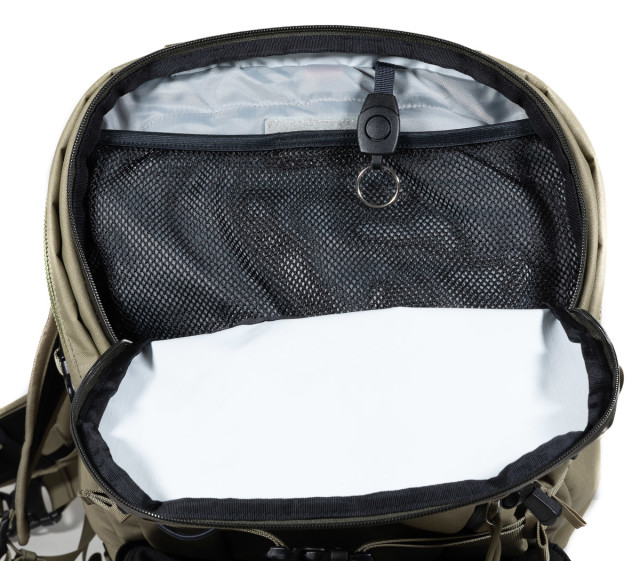
Tactical style packs that are covered in PALS loops, have taken off in a lot of non-military/LEO sectors. However, there’s also a lot of push back on that look in a lot of places as well. Personally, I’m torn on this. By not being completely covered in PALS webbing, the Ajna is certainly cleaner looking, and certainly less “militaristic”. However, it’s also hard to deny the utility of being able to attach things wherever they’re need. I think F-Stop Gear has tried to split the difference providing some PALS mounts, and some other attachment points, but I would like to have some more PALS webbing on the back and sides of the pack.
At the very bottom, there’s a zippered compartment that I believe is for storing the rain cover when it’s not in use. At least that’s the best use I’ve come up with as it has no other apparent function or need to exist.
The back panel of the pack is zippered and provides access to the mounted ICU.
Front versus back entry in a backpack a matter of trade offs. In the case of the Ajna, and for a hiking camera pack in general, I like the rear access as it keeps the straps and back padding out of the muck and dirt when I put the pack down to get the gear. I find this keeps me and my gear cleaner.
Of course, the one downside to the rear entry arrangement is that you can’t have a buddy get a piece of camera gear for you without taking off the pack. This can be especially frustrating when you have an extra layer of harnesses, such as a Black Rapid Backpack Strap, to remove to get the pack off.
The inside of the back panel has yet more storage in the form of another zippered pocket and PALS loops. However, the PALS loops here can’t be used when the pack has an ICU installed.
Finally, opening the top lid provides access to the rest of the main compartment. If you’re combining the Ajna with a large ICU, there won’t be a tremendous amount of room here, but you should be able to fit a couple of extra layers. In my experience, I’ve had no problem getting a set of hard-shell rain gear (pants and jacket), an extra hoodie, and some other smallish things in on top of a large ICU.
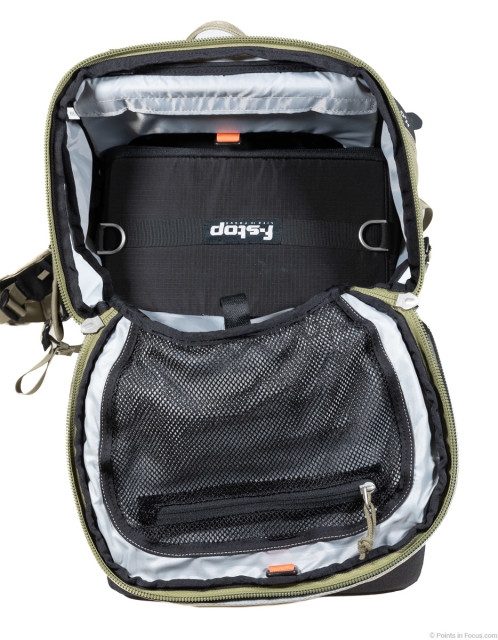
Internally, there’s a pocket in on the front side of the main compartment that can be used as a laptop sleeve or for a hydration bladder. F-Stop Gear claims the pocket is big enough to carry a 13″ laptop. In my experience using the Large Pro ICU, I found the size of the ICU made it impractical to put much of anything in that pocket.
Hydration Bladder Support
F-Stop Gear markets the Ajna as being ready for a hydration bladder. While this is technically true, I find the implementation is lacking.
F-Stop Gear intends for you to use the internal pocket in the main compartment for your hydration bladder. To aid in this, there’s a Velcro loop that at the top of the pack over that pocket, that can be used to hang a hydration bladder.
I have some real problems with this design.
My first issue is that it puts heavy water far out away from my back. Water is fairly heavy, a 100 oz. (3 L) hydration bladder weighs around 6.25 lbs. (2.8 Kg). Hanging away from your back like the Ajna does, increases the perceived weight. Moreover, instead of the weight being just a downward pull, preferably into the waist belt, it will tend to pull outwards on your shoulder harness.
In addition to to the weight distribution, there are also potential problems with drinking tube length, and fit in general.
I use an insulated CamelBak Stowaway 3L(Affiliate Link) insulated bladder (the insulation really helps when it’s hot out). When I have this in the front pocket, after routing the tube through the pack there’s very little slack to comfortably drink. Instead of being able to pull the tube up to my mouth, I have to awkwardly turn my head to reach it.
The bigger problem for me is the problem of water and camera gear being in the same compartment. I would argue that every possible measure should be taken to protect the camera gear from getting wet, and this isn’t an example of that.
In the case of a water bladder, there should be a strong fully water proof barrier between the camera gear and the hydration bladder. Moreover, the compartment that contains the hydration bladder should be designed to drain water quickly to the outside in the event that the bladder leaks.
F-Stop Gear did none of these things. The pocket for the hydration bladder isn’t even coated with the same polyurethane material as the rest of the outer fabric. Moreover, there’s no way for water to drain out of the pocket to the outside of the pack.
If this was just a hiking pack, I wouldn’t be so concerned. Sure, some clothes or sealed food pouches might get wet, but they can be dried easily enough. If that much water was to get anywhere near the camera gear, that would be very bad and very expensive.
All of these problems could have been circumvented by using the right side pocket for the water bladder. This would put the bladder closer to the wearer’s body, thus improving the weight distribution. Moreover, the divider between the side pocket and the main compartment could be easily reinforced with a fully waterproof membrane to keep any leakage away from camera gear. Finally, a drainage hole in the bottom of the side pocket would allow a leaking bladder to drain without holding water against the main compartment (defense in depth against water ingress).
Incidentally, such a drain hole does exist on the back outer pocket, though I have no idea why. It’s also doesn’t appear to be a defect in my bag either, as the hole appears finished and cut in an arc, not indicative of a tear. Moreover, I can’t imagine why you’d want to put something dripping wet in that pocket, as the fabric between it and the main compartment isn’t waterproof either.
Weather/Water Resistance
In my other backpack reviews, I didn’t make a big deal about weather resistance. To start with, in most cases those packs weren’t sold as having an unprecedented level of weather resistance. Yet when push came to shove, they had multiple layers of weather protection applied (including water repellent coatings, and included rain covers).
Secondly, and maybe more importantly, until now the backpacks I’ve reviewed are what I consider urban backpacks. That is they’re not really aimed at being taken out in to the back country or on an expedition. In an urban environment, there are many more opportunities to get out of rain and snow than there are out in the wilderness.
Given that, I feel that in the case of the Ajna (or really any of F-Stop Gear’s Mountain series backpacks) weather resistance is much more important to address.
Building a really weather proof pack is all about defense in depth. You simply don’t rely on one layer of protection and call it a day. Instead you provide as many layers of protection as possible, from the coatings, to the material itself, to the design of the pack as a whole to direct water away from more vulnerable points.
Unfortunately, F-Stop Gear doesn’t seem to have done any of that. Instead, they’ve put their faith in their “Advanta™” material and YKK Zippers and pretty much stopped there.
In a normal hiking pack, I wouldn’t make such a big deal about this. As I said, a shirt can be dried out. However, this is a pack marketed expressly for photographers. It’s not that difficult to have $10,000–20,000 worth of gear on one of these bags.
In addition to the losses incurred by damaged gear, if this is being used in a professional context there’s also the potential losses in not being able to carry out y our job as the photographer/videographer too.
Unfortunately, when I put it to the test, their Advanta™ material just doesn’t seem cut it.
Rain Cover: Not Included but Needed
Lets start at the outer most layer possible — a rain cover. F-Stop doesn’t provide one with the pack. However, they do sell one for $19.
I’m not really sure what their reasoning for this was, but it just feels cheap to me. The Ajna is a $260 bag without an ICU, add an ICU and you’re pushing $300. On top of that they want $20 for a rain cover.
What’s frustrating to me about this is that this isn’t a cut rate bag. At $260 for the pack alone without the camera gear, it’s a very expensive hiking pack. Most hiking packs I looked at were half the price included rain covers. Never mind, for $290 you can get a comparably sized ThinkTank Photo Backlight 36L which includes both a rain cover and the internal padding for your camera.
I would have less of a problem with this if the overall weather proofing turned out to be bulletproof. However, that wasn’t the case in my testing. Moreover, I find it a bit insulting that I should have to pay another $20 to actually protect a pack that was sold as having unprecedented weather resistance in the first place.
Durable Water Repellent Coating: Not Applied
Moving in a layer would be a durable water repellent coating on the fabric’s exterior.
A water-repellent coatings won’t make a bag weather proof. However, it will cause water to bead up and run off the fabric before it can soak in. While you can’t rely on this as the only line of defense, it can be adequate on its own in light rain. Moreover, keeping the fabric from getting saturated helps dry the bag out quicker when it does get wet.
Based on my testing, here too it seems that F-Stop Gear has skimped out. When I put my Ajna in the rain, I didn’t see water bead up or run off. Instead it almost immediately soaked into the fabric.
This again is hugely disappointing for a $260+ pack sold for photographers. While a DWR coating isn’t going prevent gear from getting wet in all conditions, it can provide all the protection needed in a light drizzle. Moreover, it helps shed water before further layers have to deal with it.
The only potential mitigating factor here is that my pack is 3 years old at this point and a DWR coating may have worn off. However, I don’t believe that’s actually the case. The vast majority of it’s life has been in storage in a climate controlled environment and it simply doesn’t get used that much. Moreover, if a water repellent coating had warn off, I would not expect it to wear off uniformly over the entire pack.
Material: Not Up to Snuff
Below the water repellent coating, you have the material itself. F-Stop gear advertises the packs as having a thermoplastic layer for weather proofing.
A thermoplastic film should be essentially water proof (at least to rain). This is essentially what non-breathable rain gear is made out of. Granted you can’t expect dry bag like performance, but you shouldn’t need that for rain anyway.
This is where I found the biggest failing of the Ajna.
To test my bag, I left the pack outside in a rain storm ranging from brief but heavy, to constant but light. According to the NWS, the total accumulated rainfall over the 1.25 hour testing period was about 0.2 inches (5 mm). The pack was sitting upright on a mesh chair (so no water could pool around the base of the pack) in a position similar to how it would be oriented if it was being carried. Further the pack was “inflated” with an air filled trash bag in order to hold the shape of a gear filled pack.
After retrieving the pack, the entire exterior layer of fabric was saturated. However, the padded back panel wasn’t wet indicating that the angle it was at prevented water from running down between where your back and the pack would be. Nor was there any noticeable dampness near the rear entrance zippers for the main compartment (so water likely didn’t get in though there).
On inspection, I found inside surfaces of all the exterior panels were damp. Upon opening the top stash pocket, the mesh panel in it was very wet.
Opening the top cover to the main compartment, I noticed that there were drops of water on the top of the trash bag that was providing shape and structure during testing.
Upon removing the trash bag from the pack, I found a substantial amount of water (several tablespoons) pooled up in the bottom of the pack.
All told, as far as I’m concerned this is a massive failure for this backpack. It’s sold as being weather resistant, and something that is “trusted by professionals in the toughest environments”. In my testing, I certainly wouldn’t rely on this to keep my gear dry anywhere that I expected to see a lot of rain.
Bottom line, if you’re going to take this where it’s likely to rain, I would strongly recommend buying the rain cover and spraying your pack with a water proof coating like Nikwax’s Tent and Gear Solarproof(Affiliate Link) .
Design: Potentially Compromised
Finally, there’s the design aspect of how details are designed to help move water away from more vulnerable areas, such as zippers. This would include things like “storm flaps” that cover zippers so that water drops over them instead of running across them.
In terms of design, there are a couple of points of concern.
To start with, I would really have liked to see more traditional storm flaps covering the zippers. While the YKK Aquaguard zippers should provide a strong level of weather resistance on their own, they can be damaged. A damaged zipper isn’t going to provide the rated weather resistance. A storm flap provides an added layer of defense against water intrusion.
A bigger point of concern is the zipper to the top stash pocket. There’s two points here. First, there’s no storm flap over this zipper. While the YKK Aquaguard zippers should provide a high level of weather protection on their own, the don’t seal perfectly where the two sliders meet. Moreover, any damage to the zippers and the weather resistance is impacted.
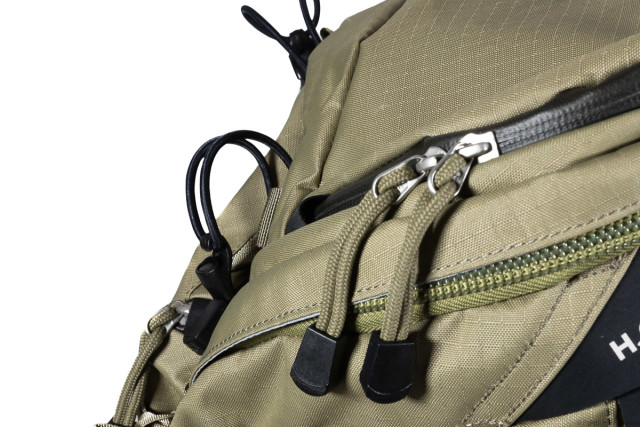
The second potential problem area is the is cover at the end of the zippers travel. While the zipper itself is zipped and sealed under this cover, the way the cover is oriented makes it easy for water to collect in it and from there work its way into the backpack.
In my testing the top stash pocket was clearly a weakness in the weather sealing. It definitely wetter than any of the other pockets. Moreover, its one of my leading suspects for the ingress point for water in the main compartment.
While I have fewer concerns for the zippers on the other pockets, again, they lack storm flaps and the added protection that comes with them.
Painfully Thin Harness
The final complaint I have with the Ajna, is the painfully thin harness. Again, I’m not sure what F-Stop Gear’s designers were thinking, as this is marketed as a camera backpack and camera gear is generally heavy. As I said, I can easily load 40 pounds of camera gear into this backpack before adding any additional stuff.
What I found interesting is that F-Stop Gear’s anemic shoulder harness seems to be in a league of its own. When I was looking at 40 L hiking packs, almost every one I found had much better padded straps. Likewise, virtually all camera backpacks, even much smaller ones that can’t carry nearly as much weight, have much better padded straps.
Moreover, it’s not like F-Stop Gear doesn’t make packs with appropriately padded harnesses. The Tilopa and larger Mountain series packs all have much better padding on both the shoulder and waist straps.
The only way the harness on this makes sense to me is if F-Stop gear intended this to be an ultra-lightweight pack. However, they don’t market it that way.
That said, aside form the thinness of the padding, the rest of the harness is fine. I’ve had no problem adjusting the suspension of the pack. More importantly, I’ve had no problems with the buckles slipping on the webbing.
Improvements
In my opinion, F-Stop Gear should really redesign the Ajan (and potentially their other Mountain series packs) to address some of the major issues. To start with, the Ajna should have the same straps as the larger Mountain series packs. Sure, you can kind of work around the issue by adding 3rd part strap pads (as I have) but again, this shouldn’t be something you have to do on a $260 backpack.
Secondly, F-Stop should re-engineer their hydration bladder support to use a side pocket outside of the main compartment. Moreover, this pocket should be drained, and sealed with a water proof barrier between it and the main gear compartment to protect the camera gear for a leaking bladder.
Finally, the weather resistance issues should be addressed. To start with a rain cover should be provided standard, not as a $20 extra. Second, the top stash pocket’s zipper should be redesigned to insure that it sheds water instead of collecting it and channeling it into the bag.
A Foregone Conclusion?
When push comes to shove, my position on the Ajna is definitely mixed. On one hand, I’m still using it and that has to say something. Especially since I could easily replace it.
That said, I also regret changing my mind and going with the Ajna instead of the Tilopa I was originally looking at.
I changed my mind at the last minute in part because of the larger size of the Tilopa. At the time, I felt the smaller Ajna would be a better fit for flying. Moreover, I was concerned that with 10 L more capacity, I would find a reason to load it up and carry all that much more weight.
The assumption I made in the heat of the moment was that the Ajna would also have the same thickly padded harness the Tilopa and larger packs had. This assumption seemed entirely reasonable to me, as no other brand I’ve owned put such an underwhelming harness on some of their packs even the smaller ones. Even something as limited in capacity as my ThinkTank StreetWalker Pro has substantially better padded shoulder straps.
Of course, I could have returned the pack when I first got it and realized that the harness was thinner. I didn’t, and that was probably my second mistake, in part due to time constraints, and in part because after some initial testing it seemed okay even with the thin straps. The mistake wasn’t really apparent to me until I had the pack on with 40+ pounds of gear in it all day.
That said, the disappointing performance in the rain is a real problem for me. While that can be mitigated by getting the rain cover, I feel like its something that I really shouldn’t have to do based on how the pack is marketed. At a minimum, I feel that a rain cover shouldn’t be something I have to spend more money on.
This brings me to the end of this review. I don’t really do recommendations in my reviews. Instead, I try to explain my situation and how the kit fits with that. In this case, I have a number of issues with the pack that I think F-Stop gear should improve.
That said, I really like F-Stop Gear’s system as a whole. If you’re looking for a hiking style backpack designed for photographers, I would strongly recommend looking at F-Stop Gear’s offerings, just maybe not the Ajna. And probably buy the rain cover.
-
At the time of writing, FAA regulations require devices with Lithium based rechargeable batteries (e.g., Lithium Ion [Li-Ion], Lithium Polymer [Li-Po], etc.) to be carried in the cabin. This is the dominant form of battery used in electronic devices, such as phones, tablets, laptops, and cameras. As such, per current (as of the time of this writing) you cannot check bags containing cameras with their batteries. ↩︎
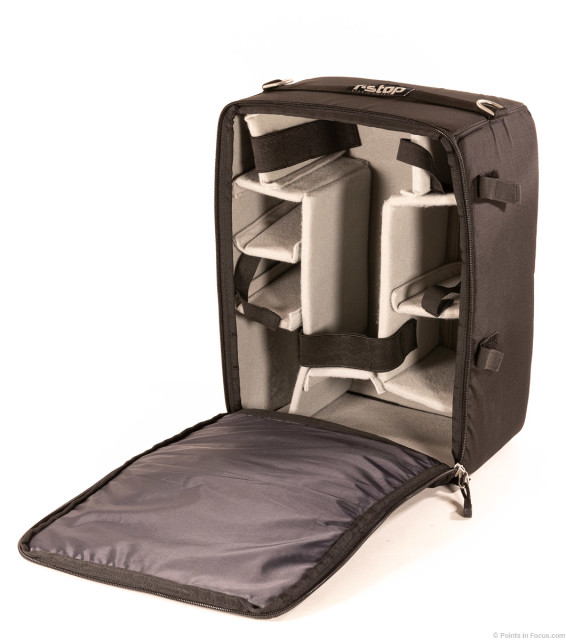
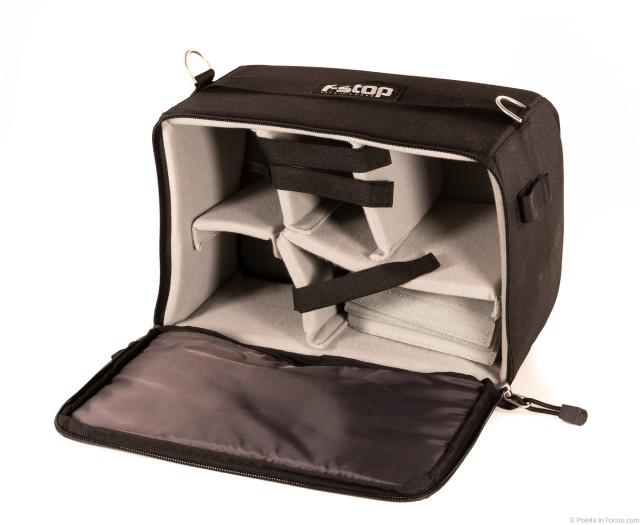
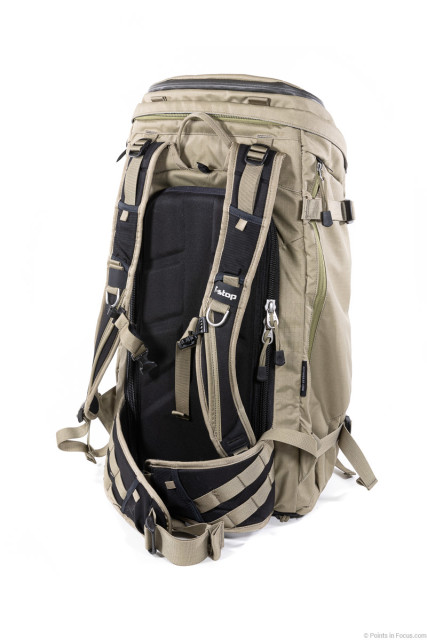
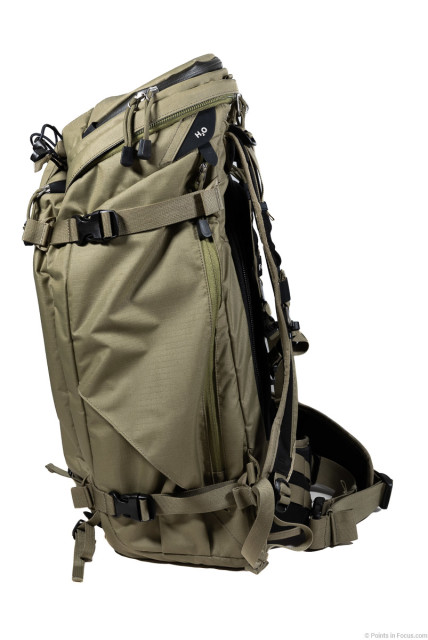
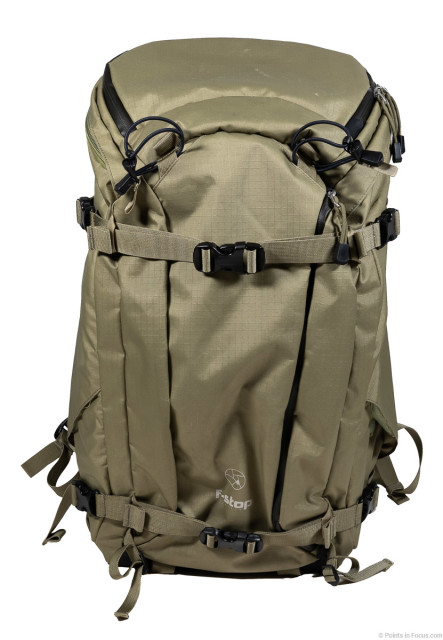
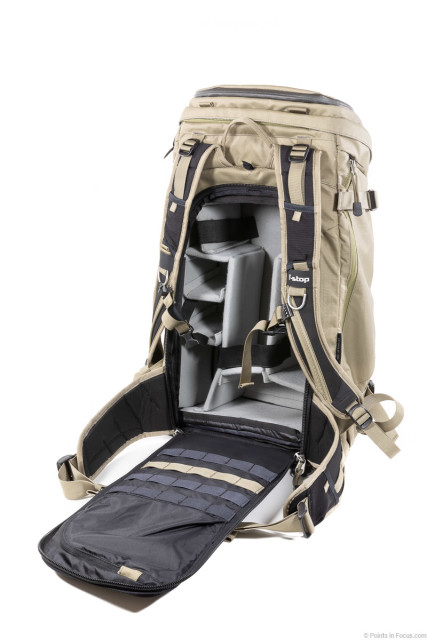
Comments
There are no comments on this article yet. Why don't you start the discussion?